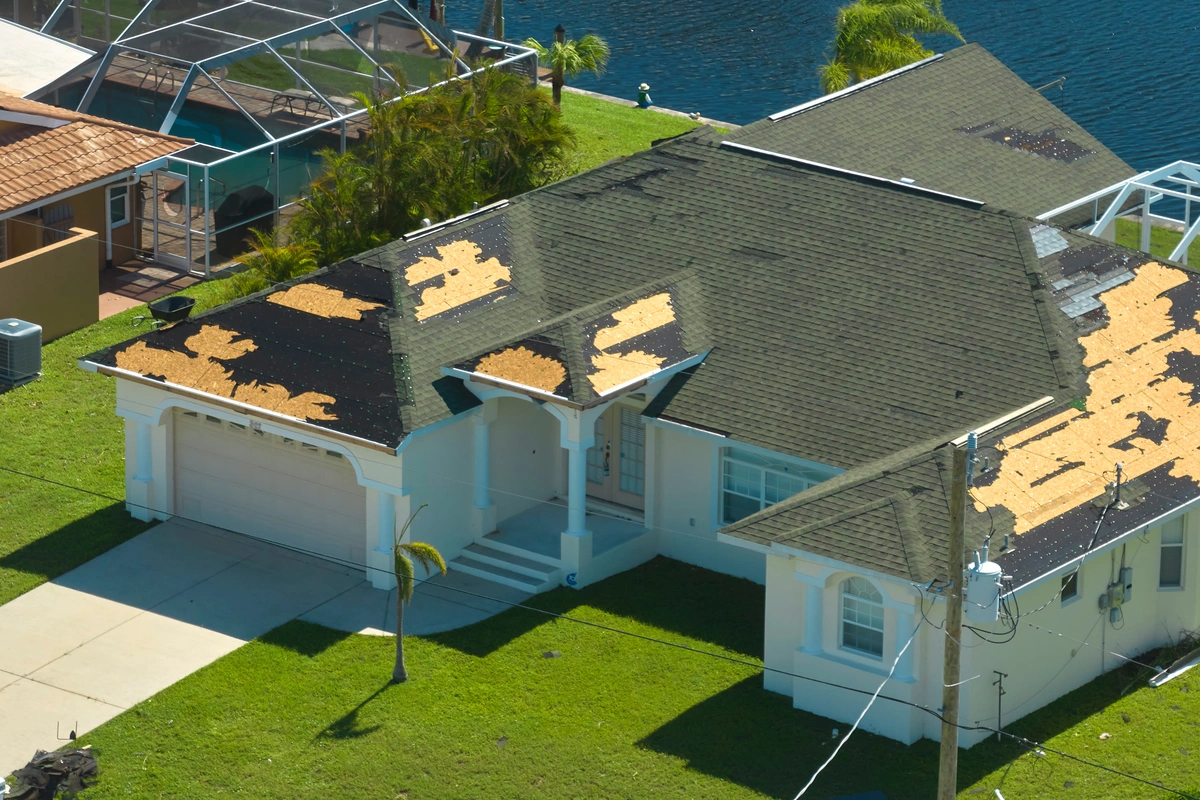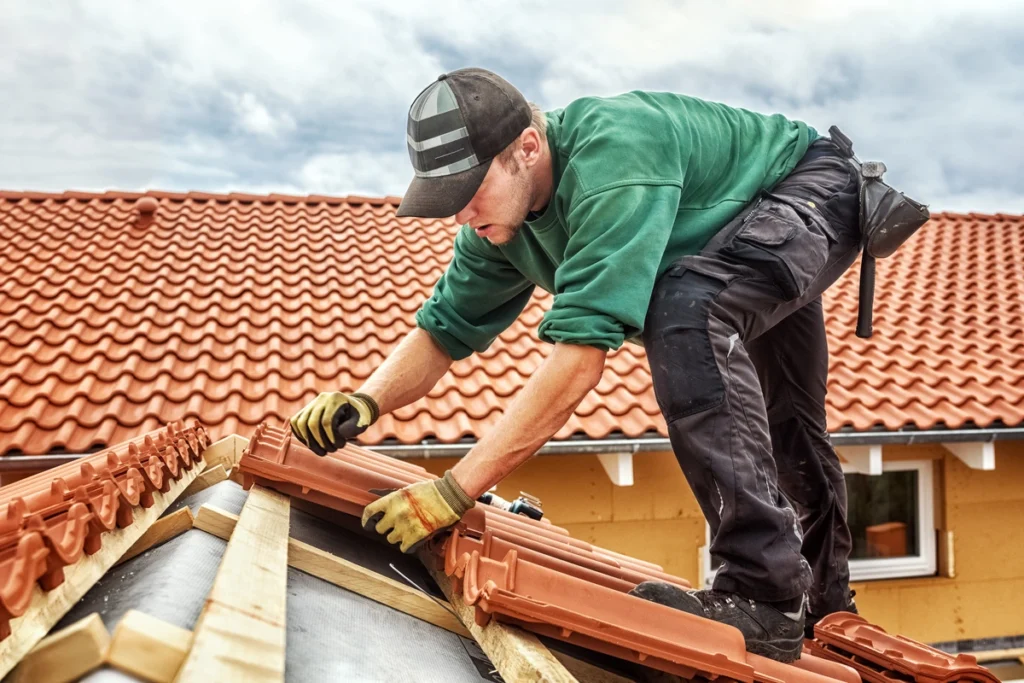
Windstorms can wreak havoc on your home, particularly when it comes to roof damage. Knowing the signs of wind damage and understanding the next steps to take after a storm can save you time, and money, and prevent further issues from arising.
Missing or damaged shingles, dented or warped metal roof panels, and cracks or tears in flat roofs are visible signs of wind damage to your roof that should be checked after a storm.
In this blog post, we’ll explore key indicators of wind damage to your roof and guide you through essential actions such as documentation, the insurance claim process, and seeking help from the team of industry professionals at Shingle and Metal Roofs, LLC.
Signs of Wind Damage To Your Roof
After a storm, inspecting your roofing for any visible signs of wear and tear, such as cracks, blisters, or cuts, is important. Missing shingles or damaged shingles, dented or warped metal roof panels, and cracks or tears in flat or membrane roofs are all visible signs of wind damage to your roof that should be checked after a storm.
After identifying wind damage to your roof, the next steps should include inspecting and documenting the damage, contacting your insurance company for coverage details, and hiring a professional roofing contractor.
Let’s look at the most common signs of wind damage to a roof.
Damaged or Missing Shingles
Missing or damaged shingles are often the most visible sign of wind damage to your roof. Strong winds can cause these roof shingles to tear, warp, crease, or lift from the roof deck, exposing underlying layers and creating a potential entry point for water.
To determine if your roof has been affected by windstorm damage, it’s important to inspect various areas where damage is likely to occur. This includes looking at locations with missing or visibly compromised shingles as well as any patterns of unsealed shingle tabs that could indicate severe weather impact.
Be sure also to check soffits and fascia for signs of distress caused by excessive wind pressure.
Dented or Warped Metal Roof Panels

Dented or warped metal roof panels clearly indicate wind damage to your roof. Strong winds can cause significant pressure fluctuations, leading to the bending and twisting of metal roofing materials.
In addition to dents and warps, other signs that your metal roof may have sustained wind damage include failed seams between panels and visible rust spots. Failed seams can be particularly concerning as they allow water to penetrate beneath the surface, causing leaks and further deterioration.
Wind-thrown debris like branches or flying objects can also result in punctures or scratches in the protective coating, increasing the risk of corrosion over time. Regular inspection following storms or high-wind events is essential to identify any potential problems early on so that roof repairs or replacements can be appropriately scheduled before more significant issues arise.
Cracks or Tears in Flat or Membrane Roofs
Cracks or tears in flat or membrane roofs are telltale signs of wind damage that property owners should not ignore. Flat roofs, which typically utilize materials like single-ply membranes, modified bitumen, or built-up roofing systems, are particularly susceptible to the destructive effects of strong winds.
Moreover, weather events like a major storm with high winds can also create punctures or abrasions on a flat roof’s surface due to flying debris. It is essential for homeowners to regularly inspect their roofing material after major storms for any visible signs of wear and tear, such as cracks, blisters, or cuts.
Next Steps After Wind Damage To Your Roof
After identifying wind damage to your roof, the next steps should include inspecting and documenting the damage, contacting your insurance company, and hiring a professional roofing contractor for roof repair.
Inspect and Document The Damage
If you suspect wind damage to your roof, the first step is to inspect and document the damage. Grab a notepad or camera and walk around your home’s exterior, looking for any visible signs of damage.
Missing or damaged shingles clearly indicate wind damage that should be documented. Look for dented or warped metal panels on flat roofs, which may indicate significant storm damage.
It’s crucial to take note of all visible damages, including clogged or damaged vents, damage to roof flashing, and wind damaged shingles, as this will help you file an insurance claim if needed. A detailed list of damages with photos attached is essential evidence when making a claim with your insurer.
Contact Your Insurance Company
The first step you should take after identifying wind damage to your roof is to contact your insurance company. Your homeowner’s policy may provide coverage for the repairs or replacement of your roof due to extensive wind damage, but it’s important to understand your policy and its limitations.
It’s also crucial that you understand how filing a claim will affect your coverage and premiums in the future. Some policies may require a deductible before they cover any costs associated with repairing or replacing a damaged roof.
Additionally, some insurers may raise premiums after filing multiple claims within a certain time period.
Hire a Professional Roofing Contractor

After wind damage to your roof, hiring a professional roofing contractor is crucial in assessing the extent of the damage and providing accurate repair estimates. They have the expertise and experience needed to handle different levels of storm damage and help protect your home from further water damage.
It’s important to note that not all contractors are created equal – some may offer sub-standard work or engage in unethical practices. So be careful when choosing a contractor! Look for licensed and certified professionals with great reviews who can reassure you that your property is being taken care of.
Conclusion
Wind damage to your roof can be a serious problem that requires immediate attention. The signs of damage may not always be obvious, so it’s important to inspect your roof thoroughly after a storm.
Remember to document any visible damage and contact your insurance company immediately.
Contact Shingle and Metal Roofs, LLC, for an estimate. Our 2nd-generation family-owned roofing business will walk you through the process with open communication and integrity so you can rest assured your roof is adequately repaired or replaced and protected against future windstorms.






